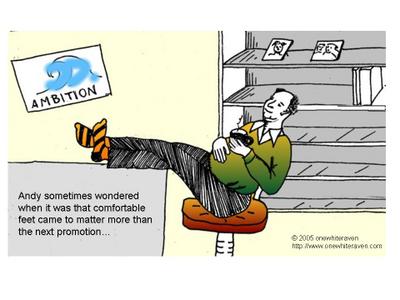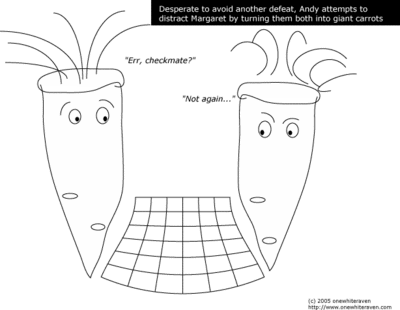
Monday, October 31, 2005
Wednesday, October 26, 2005
Tuesday, October 25, 2005
Before the Mine
A short while ago, I went out to a soon-to-be mine site somewhere in Western Australia. It was a beautiful spring morning, 32C, a brisk wind.
We stood up on a mesa, about forty metres up from the floodplain. The mesa spread in a gentle arc from north to south, like an arm embracing the body of the valley below. The land to the east was flat, with other mesas to the north and the north- east.
A strong steady wind blew up the ridge, rattling in the spinifex. Small birds soared along the ridge crest and dodged through the ghost gums.
We left the top of the mesa and drove our 4WD down into the valley.
There were piles of test ore scattered about, left by another mining company years ago. In between the piles of iron ore, occasionally we would see flakes of worked stone, dropped by people working tools over many thousands of years. There were delicate chips of jasper and river rock, pale stone standing out from the dark pisolite surround.
We drove on into the river valley beyond the next mesas. It’s the dry season now, and the river bed was empty except for the permanent waterholes tucked in against the base of the rocks. As we drove through the deep gravel of the river bed and out across the flood plain, we saw a solitary cow, calmly pulling young shoots from a bush, indifferent to our roaring passage.
High in the branches of the trees we saw flood debris, carried there in the great cyclone of the year before, when the river bridge was washed away down to its footings.
We stopped at the waterhole. Dragonflies hummed, a kingfisher darted across the water. Further downstream, a pair of pelicans sailed in quiet dignity. A snowy egret darted across the water. A kangaroo came out from the trees to feed.
We could hear nothing but the calls of ducks and miner birds, the hum of the flies, and the occasional splash of a fish rising to an insect.
Surrounded by this richness and beauty, I felt a sadness that the construction contractors would come, and in two years time there would be a mine, a road, a bridge, and the constant noise of heavy vehicles.
But, thinking about the chips of jasper, and the piles of iron ore, and the birds, I reflected on the ancient ground, and all the things that had come and gone. Then I thought that a century after this mine had ended little would be left to ever say it was here. Thinking this I could put it in its perspective and say "It's ok".
We stood up on a mesa, about forty metres up from the floodplain. The mesa spread in a gentle arc from north to south, like an arm embracing the body of the valley below. The land to the east was flat, with other mesas to the north and the north- east.
A strong steady wind blew up the ridge, rattling in the spinifex. Small birds soared along the ridge crest and dodged through the ghost gums.
We left the top of the mesa and drove our 4WD down into the valley.
There were piles of test ore scattered about, left by another mining company years ago. In between the piles of iron ore, occasionally we would see flakes of worked stone, dropped by people working tools over many thousands of years. There were delicate chips of jasper and river rock, pale stone standing out from the dark pisolite surround.
We drove on into the river valley beyond the next mesas. It’s the dry season now, and the river bed was empty except for the permanent waterholes tucked in against the base of the rocks. As we drove through the deep gravel of the river bed and out across the flood plain, we saw a solitary cow, calmly pulling young shoots from a bush, indifferent to our roaring passage.
High in the branches of the trees we saw flood debris, carried there in the great cyclone of the year before, when the river bridge was washed away down to its footings.
We stopped at the waterhole. Dragonflies hummed, a kingfisher darted across the water. Further downstream, a pair of pelicans sailed in quiet dignity. A snowy egret darted across the water. A kangaroo came out from the trees to feed.
We could hear nothing but the calls of ducks and miner birds, the hum of the flies, and the occasional splash of a fish rising to an insect.
Surrounded by this richness and beauty, I felt a sadness that the construction contractors would come, and in two years time there would be a mine, a road, a bridge, and the constant noise of heavy vehicles.
But, thinking about the chips of jasper, and the piles of iron ore, and the birds, I reflected on the ancient ground, and all the things that had come and gone. Then I thought that a century after this mine had ended little would be left to ever say it was here. Thinking this I could put it in its perspective and say "It's ok".
Thursday, September 08, 2005
Crosiers, cathedrals, and the memory of trees
Many have commented on the resemblance between a bishop's crosier and the delicate spiral of a tree fern. Which came first? Well, that one is obvious- no ecclesiasts roamed the earth before angiosperms ruled.
Let's think about a more obscure connection: cathedrals and trees.
The great building period for the Gothic cathedrals coincided with a period of rapid deforestation across Europe.
As the massive cathedrals were being raised whole forests were being felled to meet the needs of a growing population.
My question is this: as the architects of York Minster and Chester cathedral designed their interlocking arches, did they dream of their lost Wirral?
Did the echoing spaces of the vast buildings bring them closer to their god? Or did the heavy walls insulate them from the verdant dark danger beyond the town gate?
Do the arches contain the revered memory of the lost trees, or are they the visible armature of defence from fear?
“The forest, an overwhelming presence of the great North, is the genius loci of the Gothic church. The tall tree trunks become columns, the ogive vaults replicate the arching of the branches connecting the trees high above. Light from the low northern sun filters through the long vertical breaches between the columns as it does through the trees. The forest/cathedral is home to northern imagery. Fairies, fantastic animals, ghosts, monsters peek out from every corner and receptacle. It was in the forests that Druids performed their liturgies and magic rites, that Celtic legendary heroes went to seek their glory or escape their curses. Man was alone, in the forest, and his relationship with God was personal, direct and somewhat fearsome.
“Notes for a history of glass in architecture: the Cathedrals
Lorenzo Matteoli
1994
http://members.iinet.net.au/~matteoli/html/Articles/Glass.html
Let's think about a more obscure connection: cathedrals and trees.
The great building period for the Gothic cathedrals coincided with a period of rapid deforestation across Europe.
As the massive cathedrals were being raised whole forests were being felled to meet the needs of a growing population.
My question is this: as the architects of York Minster and Chester cathedral designed their interlocking arches, did they dream of their lost Wirral?
Did the echoing spaces of the vast buildings bring them closer to their god? Or did the heavy walls insulate them from the verdant dark danger beyond the town gate?
Do the arches contain the revered memory of the lost trees, or are they the visible armature of defence from fear?
“The forest, an overwhelming presence of the great North, is the genius loci of the Gothic church. The tall tree trunks become columns, the ogive vaults replicate the arching of the branches connecting the trees high above. Light from the low northern sun filters through the long vertical breaches between the columns as it does through the trees. The forest/cathedral is home to northern imagery. Fairies, fantastic animals, ghosts, monsters peek out from every corner and receptacle. It was in the forests that Druids performed their liturgies and magic rites, that Celtic legendary heroes went to seek their glory or escape their curses. Man was alone, in the forest, and his relationship with God was personal, direct and somewhat fearsome.
“Notes for a history of glass in architecture: the Cathedrals
Lorenzo Matteoli
1994
http://members.iinet.net.au/~matteoli/html/Articles/Glass.html
Tuesday, August 23, 2005
The First Goths of the Year
Monday, August 22, 2005
The Semiotics of Cave Tours

Independent of country, language and location, one can imagine a model of the ideal cave tour.
It starts with a climb (or possibly a descent) through forested (wooded, landscaped) ground to a rustic timber and steel structure at the entrance to the cave.
The entrance to the cave is locked with a steel (cast iron) gate.
You can feel the cool, still air of the cave beyond the grille.
The guide is not present, but a hand-drawn clock (whiteboard, plastic sign) announces the time of the next tour.
As you wait in the clammy dampness (bright sunlight) of the forest (wood, garden), other cave vistors drift in:
- A harried woman, accompanied by 2 (3) children dressed in fluorescent colours. The children are fractious. They are eating icecreams (chips, soft drinks). They scatter litter on the floor and are scolded by the woman.
- A small group of Japanese girls in tartan (flowered) knee socks. They giggle and take photographs of each other.
- Two blond Germans (Danes, Swedes, Austrians) in their 20s. They are wearing all-weather khaki shorts, expensive hiking boots and large backpacks.
- A couple of retirement age - sensible shoes, walking sticks, no-nonsense clothing.
- A suburban couple with their aged mother. She will not go on the tour (the steps are a bit much), but will wait patiently outside.
The guide arrives. He (she) is a short (tall, medium-sized), cheerful individual, dressed in the uniform of the local parks service. He rounds up the visitors. He warns us that there are many steps, that the cave is cold (9-15 degrees), that he will turn out the lights at some point, and that people should stay together. The tour will take about an hour.
He unlocks the gate and motions the group inside, admonishing us to stop at the first landing.
He describes the lighting system.
He explains the difference between stalactites and stalagmites.
He points to (picks up) the stump of a broken stalagmite (stalactite). He uses this prop to
- explain why you should never touch the stalactites and stalagmites because the oils and acid in your skin will slowly damage the calcite.
- demonstrate the translucency of calcite by shining a torch through it
- give a short homily on cave conservation
The group walks down the stairs to the next landing. The guide explains the lighting system.
The group proceeds. The guide explains the geology of the cave, and explains the definition of an active cave.
The group proceeds. The path goes through a narrow (low) point. The guide warns people to be careful of their heads (other sticking-out bits).
The group proceeds. The guide explains the action of water in the cave. He explains that the water level in the cave is much lower than it was a few years ago, probably due to global warming.
The group proceeds. The guide points out a calcite shawl with a light behind it. The guide highlights a fossil embedded in the wall. He describes the extent of the cave, only a small part of which has ever been opened to the public, or even explored.
The group reaches the bottom (the widest part) of the cave.
The guide turns the light out. A child exclaims how at dark it is. The guide turns the light back on. People are (secretly) relieved.
As the group gradually winds its way back to the surface, the guide tells stories from when the cave was discovered. He describes the behaviour of the early cave visitors at the beginning of the 20th century, and is critical of their conservation practices.
The group returns to the surface. The guide counts heads, locks the gate and invites people to visit the gift shop. One or two people stay a few minutes longer to share stories with the guide.
We push on, as we have heard all the stories (in some form) before.
Sunday, August 21, 2005
On Plagiarism Or, Parallel Discovery
Everything needs to start from somewhere.
The point of origin is just as likely to be random as a careful selection from the well of possibilities.
In a Penguin travel book of the 1950s, "Ten Years Under the Earth", Norbert Casteret shared a description of the mountains and caves of his native France.
The words were curiously familiar, and eventually I realised I had read the same descriptions years earlier in the novel "Shibumi" by Trevanian. Now my question is:
Did he steal, or did he discover for himself?
The point of origin is just as likely to be random as a careful selection from the well of possibilities.
In a Penguin travel book of the 1950s, "Ten Years Under the Earth", Norbert Casteret shared a description of the mountains and caves of his native France.
The words were curiously familiar, and eventually I realised I had read the same descriptions years earlier in the novel "Shibumi" by Trevanian. Now my question is:
Did he steal, or did he discover for himself?
Subscribe to:
Posts (Atom)


